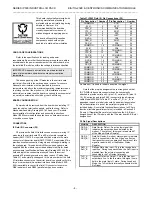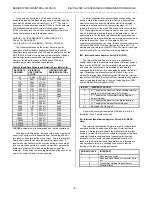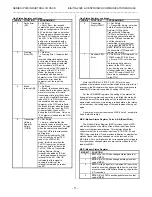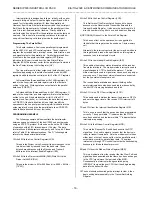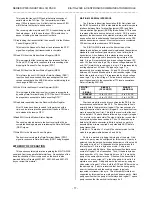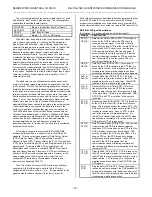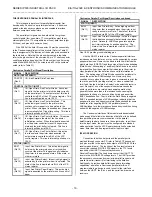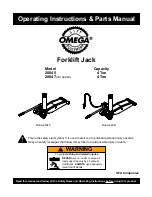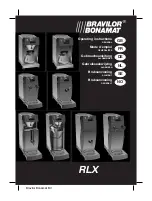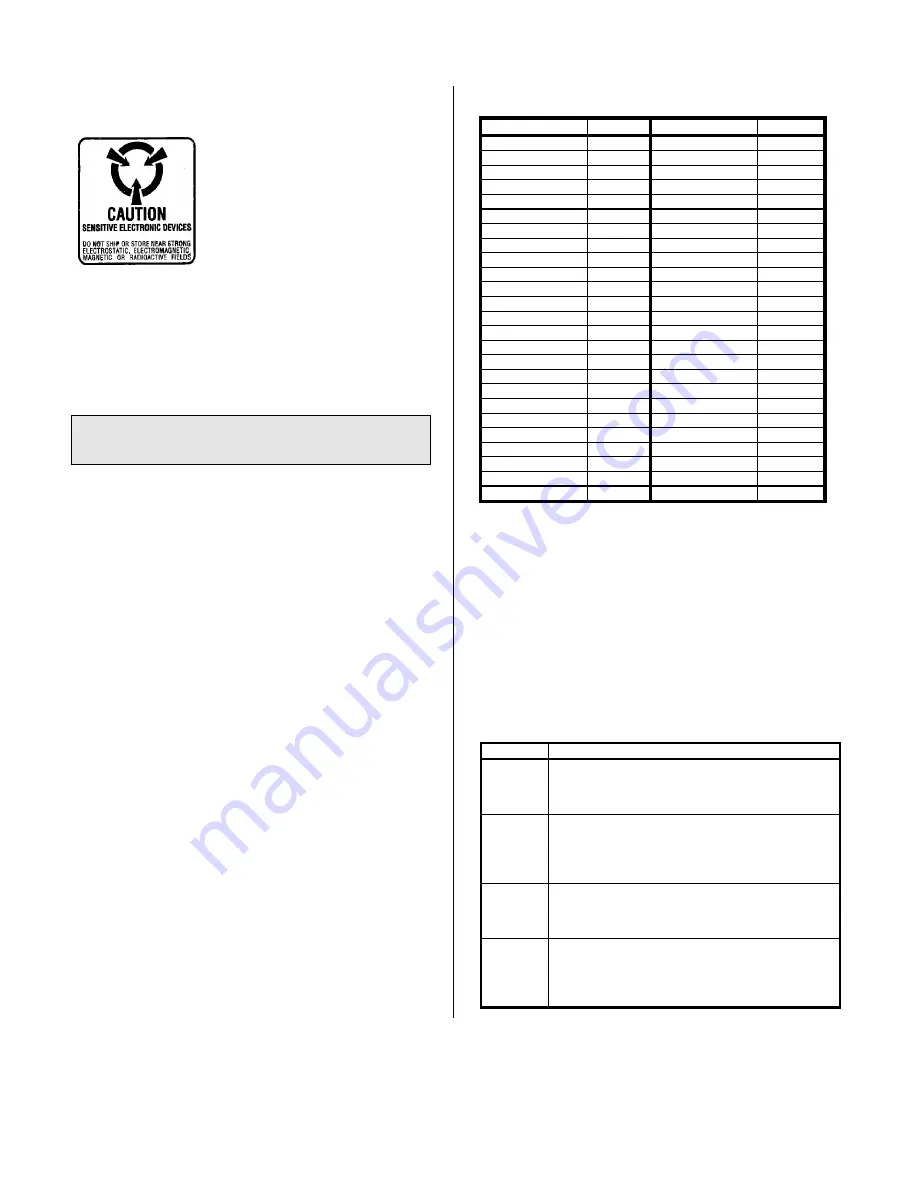
SERIES IP503 INDUSTRIAL I/O PACK EIA/TIA-232E & CENTRONICS COMMUNICATION MODULE
___________________________________________________________________________________________
- 4 -
This board is physically protected with
packing material and electrically
protected with an anti-static bag during
shipment. However, it is
recommended that the board be
visually inspected for evidence of
mishandling prior to applying power
The board utilizes static-sensitive
components and should only be
handled at a static-safe workstation
CARD CAGE CONSIDERATIONS
Refer to the specifications for loading and power
requirements Be sure that the system power supplies are able to
accommodate the power requirements of the carrier board, plus
the installed IP modules, within the voltage tolerances specified
IMPORTANT: Adequate air circulation must be provided to
prevent a temperature rise above the maximum operating
temperature
The dense packing of the IP modules to the carrier board
restricts air flow within the card cage and is cause for concern
Adequate air circulation must be provided to prevent a
temperature rise above the maximum operating temperature and
to prolong the life of the electronics. If the installation is in an
industrial environment and the board is exposed to environmental
air, careful consideration should be given to air-filtering
BOARD CONFIGURATION
Power should be removed from the board when installing IP
modules, cables, termination panels, and field wiring. Refer to
Mechanical Assembly Drawing 4501-434 and your IP module
documentation for configuration and assembly instructions.
Model IP503 communication boards have no hardware jumpers
or switches to configure
CONNECTORS
IP Field I/O Connector (P2)
P2 provides the field I/O interface connections for mating IP
modules to the carrier boardP2 is a 50-pin female receptacle
header (AMP 173279-3 or equivalent) which mates to the male
connector of the carrier board (AMP 173280-3 or equivalent)This
provides excellent connection integrity and utilizes gold-plating in
the mating area. Threaded metric M2 screws and spacers are
supplied with the module to provide additional stability for harsh
environments (see Mechanical Assembly Drawing 4501-434)The
field and logic side connectors are keyed to avoid incorrect
assemblyP2 pin assignments are unique to each IP model (see
Table 21) and normally correspond to the pin numbers of the field
I/O interface connector on the carrier board (you should verify this
for your carrier board)An optional interface cable (Model 5029-
944) is available to convert the field I/O connector to common
DB9 (serial port) and DB25 (parallel port) port connectors
Table 21:IP503 Field I/O Pin Connections (P2)
Pin Description
Number
Pin Description
Number
COMMON
1
STB*
26
RI_A*
2
AFD*
27
DTR_A*
3
PD0
28
CTS_A*
4
ERR*
29
TXD_A
5
PD1
30
RTS_A*
6
INIT*
31
RXD_A
7
PD2
32
DSR_A*
8
SLIN*
33
DCD_A*
9
PD3
34
COMMON
10
COMMON
35
RI_B*
11
PD4
36
DTR_B*
12
COMMON
37
CTS_B*
13
PD5
38
TXD_B
14
COMMON
39
RTS_B*
15
PD6
40
RXD_B
16
COMMON
41
DSR_B*
17
PD7
42
DCD_B*
18
COMMON
43
COMMON
19
ACKN*
44
COMMON
20
COMMON
45
COMMON
21
BUSY
46
COMMON
22
COMMON
47
COMMON
23
PE
48
COMMON
24
COMMON
49
COMMON
25
SLCT
50
An Asterisk (*) is used to indicate an active-low signal
Note that the pin-wire assignments are arranged such that
IDC D-SUB ribbon cable connectors can be conveniently
attached to provide serial port A (pins 1-9), serial port B (pins 10-
18), & Centronics port (pins 26-50) connectivity (see Acromag
cable Model 5029-944)In Table 21, a suffix of “_A”, or “_B” is
appended to each pin label to denote its serial port association.
A brief description of each of the serial port signals at P2 is
included below. A complete functional description of all P2 pin
functions (including parallel port pins) is included in Section 40
(Theory Of Operation)Be careful not to confuse the A & B port
designations of the IP module with the IP carrier board A & B slot
designations
P2 Pin Signal Descriptions
SIGNAL
DESCRIPTION
DCD_A*
DCD_B*
Data Carrier Detect - An active low signal that
indicates the carrier has been detected by the
modem. The status of this signal is read via bit 7
of the Modem Status Register
DSR_A*
DSR_B*
Data Set Ready- A modem status signal to indicate
that it is connected to the line (it has no effect on
the transmit or receive operation)The status of this
signal is read via bit 5 of the Modem Status
Register
RxD_A
RxD_B
Receive Data Line Input - This is the receive data
input line. During Loopback Mode, the RxD input is
disabled from the external connection and
connected to the TxD output internally
TxD_A
TxD_B
Transmit Data Line Output - This is the transmit
output data line. In the idle state, this signal line is
held in the mark (logic 1) state. During Loopback
Mode, the TxD output is internally connected to the
RxD input




